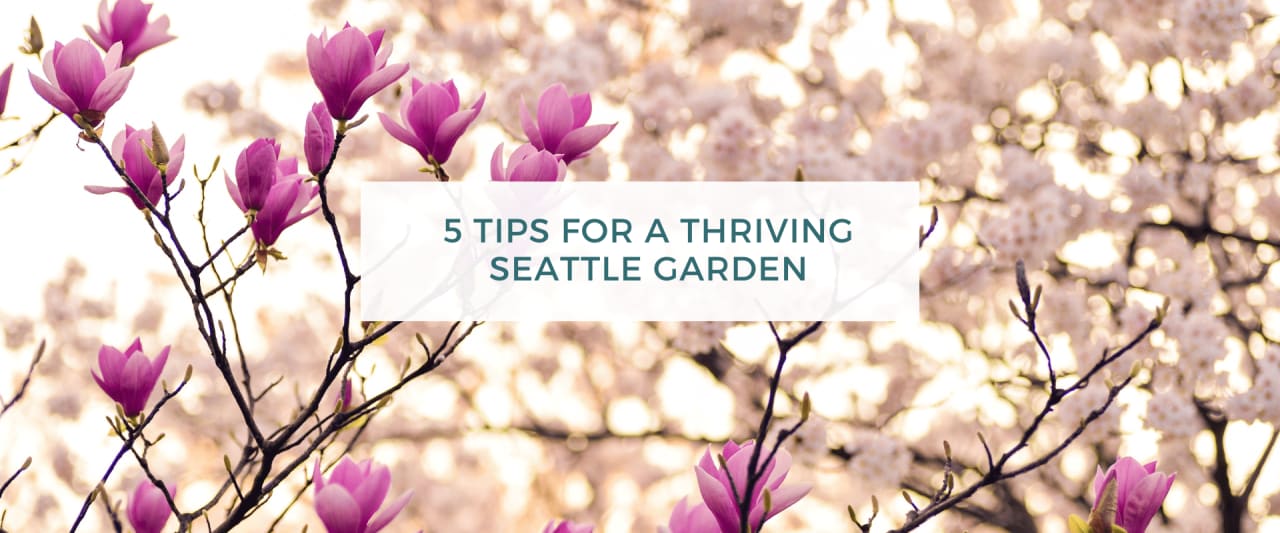5 Tips for a Thriving Seattle Garden
Tips & Advice

Tips & Advice

It's gonna be May, which means it's time to get serious in the garden, Seattlites. I'm not sure about you, but I spend every free moment of my summer in the garden. It's one of the reasons I love living in Seattle - the summers here are perfect, especially for someone with a green thumb.
Here are my top 5 tips for getting started in your Seattle garden:
Know Your Zone: The USDA Hardiness Zone Map underwent a massive update this year, and Seattle now falls within USDA Hardiness Zone 9a (the same as northern Florida!), which means we have a relatively mild climate. However, choosing plants that thrive in this zone is still important to ensure they can withstand the occasional frost and cool temperatures.
Start with Soil: Seattle soil can be a mix of loam with high clay density or sandy soil that doesn't hold water or nutrients well. Improving the soil is essential to cultivating a thriving garden or landscape in your yard. Add organic matter like compost or well-aged manure to enhance soil structure, promote drainage, and increase nutrient availability. This foundational step will set the stage for healthy plant growth and a vibrant garden.
Water Wisely: While Seattle is known for its rain, it's important to remember that summers can still bring dry spells. Set up a watering schedule, especially for newly planted gardens, and consider investing in a drip irrigation system to ensure plants get consistent moisture without wasting water.
Choose the Right Plants: Selecting plants native to the Pacific Northwest or those well-suited to the Seattle climate can save you time and effort in maintenance. Look for species like rhododendrons, azaleas, ferns, hostas, and hydrangeas that thrive in our mild, wet winters and dry summers.
Plan for Shade: Seattle's overcast skies mean that some areas of your garden might receive less sunlight than others. Take note of where the shade falls throughout the day and choose shade-tolerant plants for those areas. Hostas, ferns, and bleeding hearts are excellent options for shady spots.
Remember, gardening is both an art and a science, so don't be afraid to experiment and learn from your experiences. Another hot tip is get to know your neighbors and start swapping plants! My neighbors and I are constantly dividing plants, sharing starts, and gifting plants that just don't work in our yards. It's a great way to build community and get free gardening advice.
Happy gardening, y'all!
Stay up to date on the latest real estate trends.

Sellers
You know that saying you have to spend money to make money? It also applies to selling your home.

Tips & Advice

Market Updates
Has affordability gone by the wayside?

Tips & Advice

Real Estate
What's it all about anyway?

Market Updates
Seattle, Edmonds, and Burien

Sellers

Market Updates

Why We Can't (and Don't) Label Schools as "Good" or "Bad"
You’ve got questions and we can’t wait to answer them.